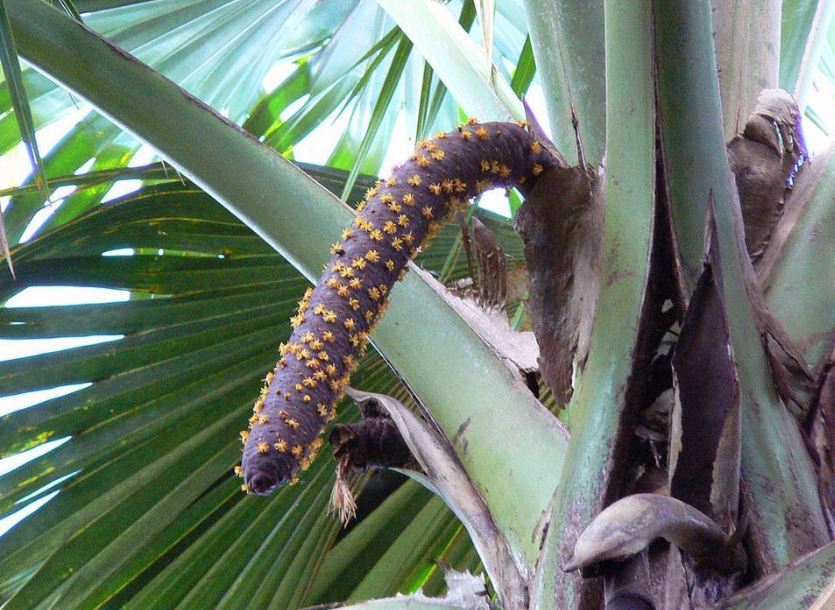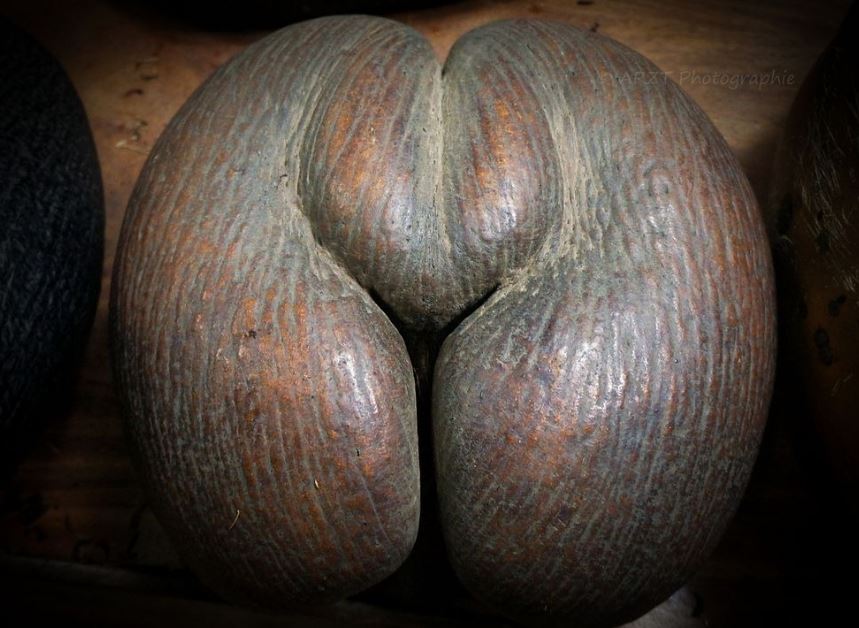Coco de mer is the most unique and exclusive palm tree in the world. It grew up somewhere on the islands of Praslin and Curieuse, or on Seychelles. The coco de mer (Lodoicea maldivica) has a slender trunk and is even more than 30 meters high at ground level. The leaves are many and the leaf blades measure up to 5 meters. In mature trees, the leaves are usually serign bounded at the edges.
It Shape Like Beautiful Buttocks
Coco de mer has characteristics that are very easy to distinguish from other plants. It is a large seed that is even bigger than a coconut. It is said that coc de mer seeds are the heaviest in the world. However, what makes this plant popular is not only the extraordinary weight of the seeds but its unique shape, such as a woman’s buttocks or rump. The botanical name of coco de mer is Lodoicea callipyge. In Greek, Callypige is “beautiful buttocks”.

Now this plant is a legend even more than any other tree in the world. Before the Seychelles were inhabited by humans and discovered, centuries ago that beans from coco de mer were often found impacted on beaches such as the Maldives, and the tree was unknown. With this unusual and unique shape, these coco de mer beans are considered an extraordinary object and a material with extraordinary aphrodisiac benefits. Because many are found on the coast of the Maldives, they are referred to as Maldives nuts. The name Maldives is still reflected in its scientific name, Lodoicea maldivica.
Also see: Health Benefits of Palmyra Fruit
The coco de mer fruit that falls in the sea does not float like a coconut, it sinks because of its extraordinary weight. After so long on the seabed, then the skin weakens, breaks off and floats. The inside of the coco de mer becomes rotten and damaged, and it floats due to the presence of a lot of gas in it. Many sailors thought it was growing underwater in the forests of the Indian Ocean. This causes the fruit of this coco de mer in French to be referred to as “sea coconut”.

At this time all coco de mer found in the sea was so valuable that even all kinds of nuts found in the sea belonged to kings. They made a great gift and even sold it for a high price. At the time, Middle Eastern prince and Roman Emperor Rudalf II gave this rare item tremendous value.
After a long time the coco de mer was considered a strange and mysterious item, then the item was traced, this happened around the 18th century, at which time explorers found their own surprise.
See more; The Tree Shaping Art
Coco de mer, The Forbidden Fruit
From the tree side, coco de mer is different from coconut, because it has male and female trees (it’s like dates). These pea-shaped female rumps come from female plants, while the male flowers grow and develop strongly suggestive phallic-looking catkins. Its shape is like a human reproductive organ once gave rise to stories among the people. Where in the dark night in the middle of the storm, when no one sees these trees uproot themselves and lock in a worldly life full of passion. This legend states that anyone who sees this tree makes love, he will die or be blind. In fact, it is not yet known exactly how this coco de mer tree pollinates.
When Major General Charles George Gordon of the British Army landed on Vallée de Mai on the island of Praslin in the Seychelles in 1881, he saw this plant and was convinced that he had found the eden plant that was in the Bible. He saw that the strange shape of the coco de mer was a fruit that had been forbidden by Adam and Eve or as a forbidden fruit.
Also see: Island of The Dolls: The Scariest Place in Mexico
The coco de mer fruit is the largest fruit and now holds the record for being the largest wild fruit in the world. It weighs 42 kg and the seeds weigh 17.6 kg. It also produces the longest cotyledons up to 4 meters. The female flower is the largest flower of all palms.


See also: Lotus Tree: Facts, Uses and Benefits


















